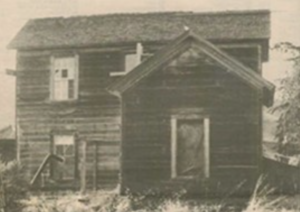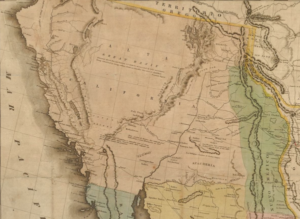Price House, Pismo Beach
Whaler, Vaquero, Rancher, and Founder of Pismo Beach
Part 1: From Bristol, England, to the Central Coast
Unexpectedly I fell in love. Not a conventional start to a relationship, I will grant you, with a 145-year age gap.

It began with curiosity on a walk in the early 1990s. My husband and I wandered down Frady Lane in Pismo Beach, and beyond. We discovered an abandoned house, weathered and gray. It had clearly been vandalized, and was badly deteriorated, yet had good bones nevertheless. Not knowing that it was a vital part of Pismo Beach history, we wondered who had built and lived in it.
Unbeknownst to us, soon after our walk, the Friends of Price House organized to plan and restore this beauty, finally opening the historic home to the public between two and three years ago. A year after the restoration was complete, I became a Price Anniversary House docent, learning about John Michael Price—a British boy who ended up becoming the founder of Pismo Beach—and falling in love with John in the process.
It was 1825 when John Price of Bristol, England, hired onto the crew of a whaling ship at age 15, sailing away from the west coast of England and into a new destiny.
Whaling was reckoned to be a dangerous occupation in the early 1800s, with ships and crew members lost every year. Physically demanding work in often harsh weather, John enjoyed himself during his contract, promptly signing up for another one with a different whaler headed for the Pacific Ocean. This time it was different. When they reached the west coast of Mexico, John and one or two others (depending on the source) jumped ship and hid from its cruel captain until the ship sailed on. After a year during which he learned Spanish, John caught a ship bound for Monterey, and arrived in Alta California in his early twenties.

Spending several years in the Monterey area, first as a lumberjack and later as a vaquero—a cowboy—John became proficient in Spanish and enjoyed a reputation as a thoughtful and diligent worker.
Monterey was the home of the Alta California government, and John caught the attention of a visitor to the area: Captain William Dana, Alcalde of Santa Barbara and new owner of the 50,000+ acre Rancho Nipomo located between Santa Barbara and San Luis Obispo.
Captain Dana hired John in 1836 to be the manager of his new acquisition, and to help build an adobe home there. In managing the rancho, John hired members of the native Chumash tribe, learning their language over time. As others acquired neighboring ranchos, John developed friendly connections with the new neighbors, particularly in the north: Francis Ziba Branch of Rancho Santa Manuela and Isaac Sparks of Rancho Huasna, both of whom would contribute to John’s future success and happiness.
Meanwhile, John’s work at Rancho Nipomo was interrupted for more than a year by the “Graham Affair.” During a disruptive period starting in the spring of 1840, approximately 100 American and British citizens who owned or managed ranchos or other businesses in Alta California were swept up in mass arrests by Alta California Governor Juan Alvarado.
 John and others—including the incident’s namesake, Isaac Graham, who had helped the governor prevail over his predecessor—were shipped in chains under Mexican guard to San Blas, Mexico, then marched inland to Tepic for trial under harsh conditions.
John and others—including the incident’s namesake, Isaac Graham, who had helped the governor prevail over his predecessor—were shipped in chains under Mexican guard to San Blas, Mexico, then marched inland to Tepic for trial under harsh conditions.
In his 1851 book Life, Adventures, and Travels in California, West Coast pioneer and author Thomas Jefferson Farnham quotes Graham as saying “And now I am lassoed like a bear for slaughter or bondage, by the very men whose lives and property myself and friends saved. Well, Graham may live to prime a rifle again! If he does, it will be in California!”
Most of those arrested left Mexico with an apology and a token payment for what they had endured. With help from the British government, John and a very few other savvy men were awarded the full amount they would have earned back home.
Having survived arrest, imprisonment, and acquittal following trial, John made strategic changes when he returned to Rancho Nipomo. He changed his name to Juan Miguel Prais, became a Catholic, accepted an offer from Isaac Sparks to run the newly-granted Rancho Huasna, and in 1844 married a well-bred, Spanish-born Californian.
Thus began John and Maria Andrea Carlon’s love story.
To be continued . . .
